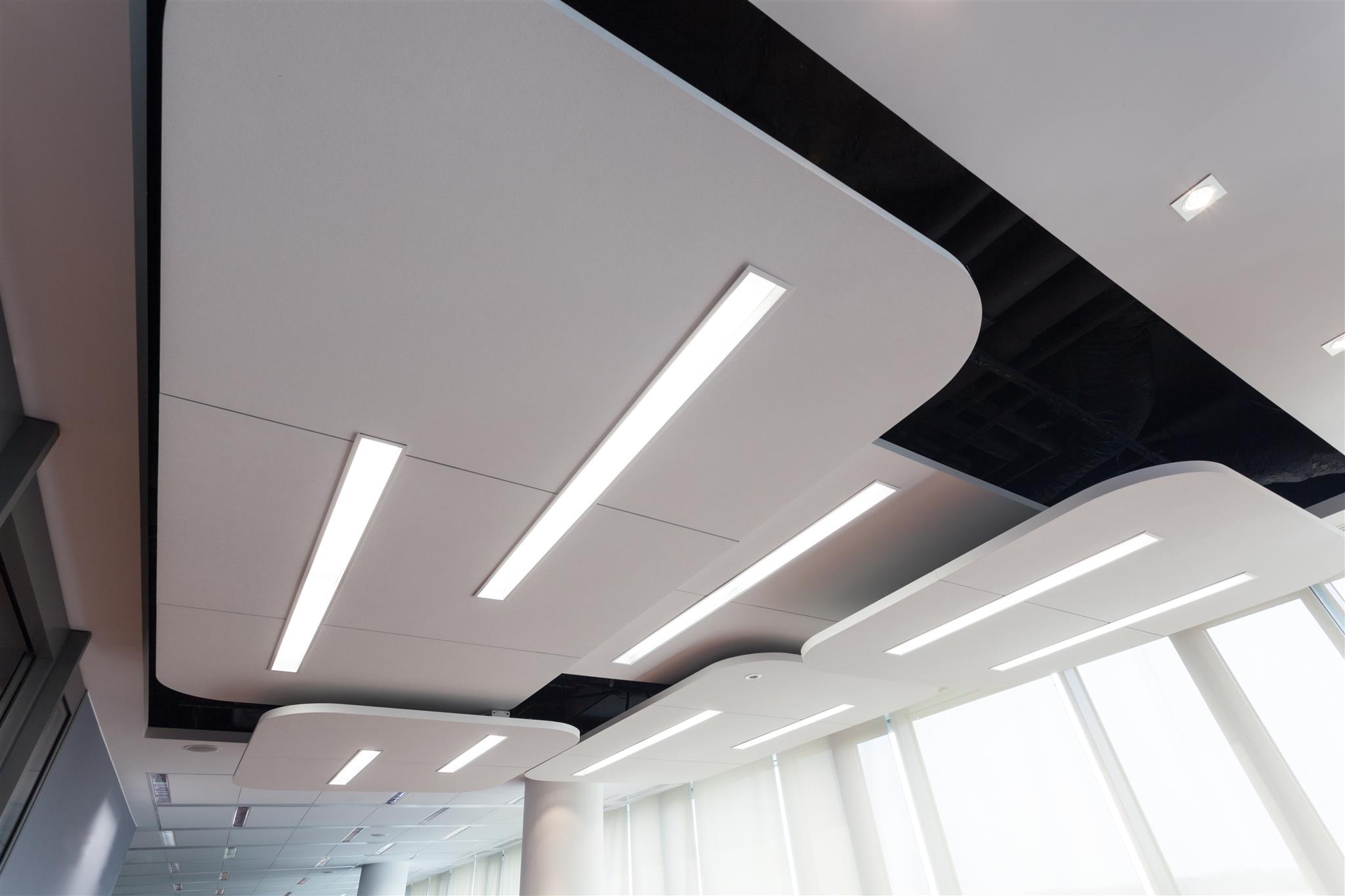

Colour rendering
Measure of the degree to which the psychophysical colour of an object illuminated by the test illuminant conforms to that of the same object illuminated by the reference illuminant, suitable allowance having been made for the state of chromatic adaptation. (http://eilv.cie.co.at/term/222)
Illuminance – horizontal
Illuminance on a horizontal plane (http://eilv.cie.co.at/term/539)
Illuminance – vertical
Illuminance on a vertical plane (http://eilv.cie.co.at/term/1397)
Illuminance uniformity
Ratio of minimum illuminance to average illuminance on a surface (http://eilv.cie.co.at/term/552)
Glare
Condition of vision in which there is discomfort or a reduction in the ability to see details or objects, caused by an unsuitable distribution or range of luminance, or by extreme contrasts (http://eilv.cie.co.at/term/492)
Colour temperature
Temperature of a Planckian radiator whose radiation has the same chromaticity as that of a given stimulus (http://eilv.cie.co.at/term/231).
Colour temperatures over 5000 K are called "cool colors" (bluish), while lower color temperatures (3000 K) are called "warm colors" (yellowish).
Human Centric Lighting
Light has been known for a long time to enable sight, safety and orientation. But light can do more than enabling vision. Light has the power to energize, to relax, to increase alertness, cognitive performance and mood, and to improve the sleep-wake cycle of people. Light can do much more than saving energy. The true value of light lies in the combination of excellent visual, biological and emotional benefits.
Human Centric Lighting supports health, well-being and performance of humans by combining visual, biological and emotional benefits of light. https://www.lightingeurope.org/human-centric-lighting
Metrics to assess light with respect to its non‐visual effects has been developed.
The circadian resetting effects of light are determined by a range of factors including the; timing, intensity, colour spectrum, duration, and photic history of exposure. ( https://pdfs.semanticscholar.org/98ec/138878f91310bbf9602fccef80019350e00c.pdf )
Timing
One of the primary factors determining the phase resetting effects of light is the timing of the light exposure. Light can either phase advance or phase delay the circadian system depending on the timing of exposure. Under normal conditions, light exposure in the late day/early night causes a phase delay of the pacemaker, whereas light exposure in the late night/early day will phase advance the clock. Healthy interior lighting requires dynamic lighting designs in which the day light or its equivalent with electric light is high during daytime, especially in the morning, while it should be low and wormer during the last 2 hours before bedtime and at night.
Intensity
The intensity of light is a vital property when considering the resetting strength of the light exposure. There is a nonlinear relationship between the intensity of light and its circadian phase resetting effects such that exposure to relatively dim indoor room light (~100 lux) for 6.5 h at night can stimulate 50% of the maximum effect of an equal-duration exposure with 10-fold or greater illuminance which we can find outdoors. Thus, the human circadian pacemaker is exquisitely sensitive to light, and light levels commonly experienced from electric indoor illumination can induce considerable resetting effects on our biological body clock.
Colour spectrum
Our circadian system is sensitivity to the different colours of light in different ways. It is particularly blue-shifted relative to the visual system. The maximum natural reduction of melatonin in our body is produce when we receive day light that incorporates 480 n.m. (blue light). This make us feel more awake, and active helping us with our day activities. During the night it is recommended not to receive this component of light as it will face delay our circadian system, making a resetting effect.
Duration and pattern
The duration of light exposure interacts nonlinearly with the magnitude of suppression such that shorter exposures induce greater effects than would be predicted by a simple linear relationship.
Photic history
The effect of a light stimulus on the circadian system is not simply dependent on the intensity of light but also on the relative change in intensity. The circadian photoreception system exhibits adaptation to prior light exposure in determining the response to a current stimulus. As an example: if we receive daylight during all day, receiving light at that night will not face delay our circadian system.
Lighting systems
Lighting systems provide dynamic and tunable light (dimming and boosting light intensity and tuning spectrum) enabling Human Centric Lighting. Lighting systems are measured in actual energy consumed and not in maximum installed power https://www.lightingeurope.org/images/focus-areas/LED/11_LE_HealthyBuilding_Infog.pdf